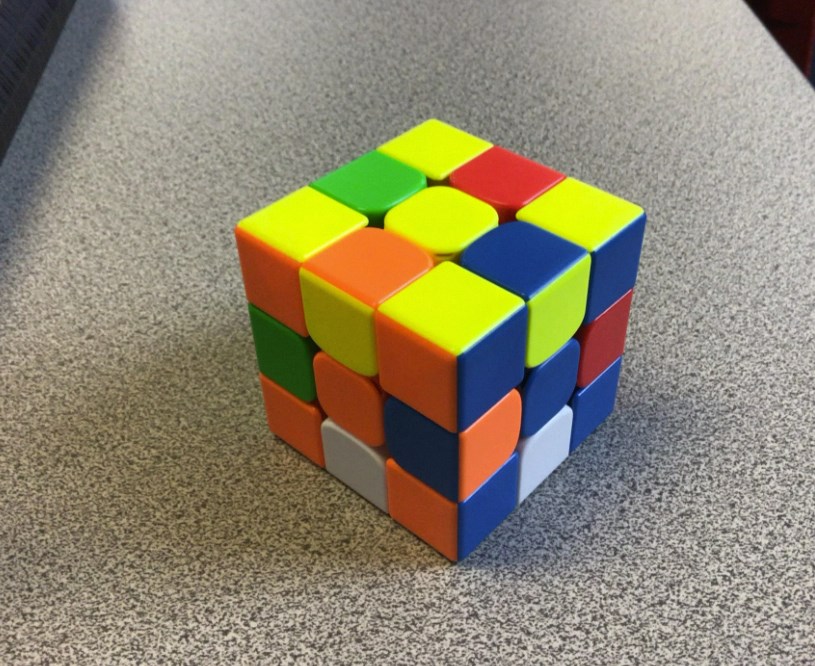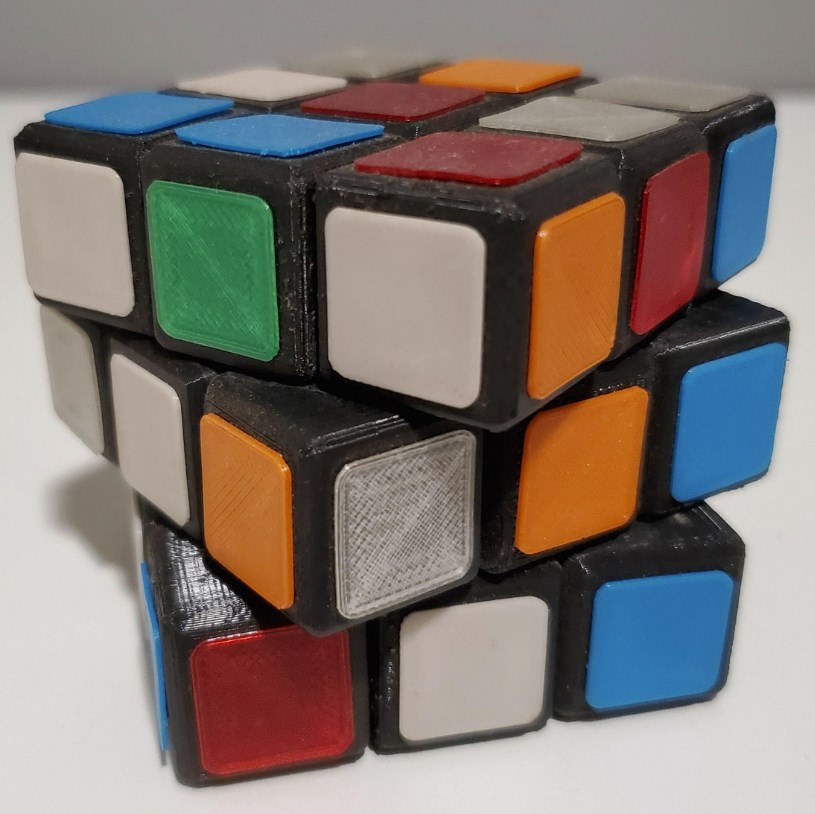The Rubik’s Cube, a seemingly simple puzzle with a surprising amount of complexity, has captivated minds for generations. Solving it can be a daunting task, but with the right approach, you can be well on your way to becoming a Rubik’s Cube master. This guide will introduce you to the “Beginner’s Method,” a popular and straightforward solution that breaks down the cube solving process into manageable steps.
Part 1: Getting Started

The Notation:
Before diving into the solution itself, it’s important to understand how Rubik’s Cube enthusiasts communicate cube moves. Each face of the cube is denoted by a letter (F – Front, B – Back, R – Right, L – Left, U – Up, D – Down). A single letter indicates a 90-degree clockwise turn of that face, while a prime symbol (‘) denotes a counter-clockwise turn. For example, R’ signifies a 90-degree counter-clockwise turn of the Right face.
Terminology:
To build a strong foundation for solving the Rubik’s Cube, it’s important to familiarize yourself with some basic terms associated with the puzzle. The “center piece” refers to the cubelet in the middle of each face, and it remains fixed in place. Meanwhile, an “edge piece” touches two different colored faces, and a “corner piece” touches three faces. Understanding these fundamental terms provides you with a clearer understanding of the cube’s structure. It also shows how each piece interacts with others during the solving process. This knowledge can greatly aid in following the solution steps more easily. You’ll be able to visualize and comprehend the movements and positioning of each piece more effectively. By incorporating these terms into your solving approach, you can better strategize and navigate the Rubik’s Cube. This can ultimately enhance your ability to follow solution algorithms with greater clarity and confidence.
Part 2: The Beginner’s Method – Step-by-Step

The Beginner’s Method solves the Rubik’s Cube layer by layer. Here’s a breakdown of the first two layers:
Solving the First Layer (The White Cross):
Choose a face to be the “top” face (usually white). The goal is to create a white cross on the top face with white corner pieces positioned correctly around the edges.
Identify the four edge pieces that have white on them. Using specific algorithms (a sequence of moves), maneuver these edge pieces to their corresponding slots on the top layer, ensuring the white and another color line up correctly. There are various beginner-friendly algorithms available online and in resources like [books on solving Rubik’s cube].
Solving the Second Layer (The Middle Layer):
With the white cross complete, focus on the middle layer (the layer below the white face). Each center piece in this layer should be surrounded by edge pieces with the same color.
Again, utilize algorithms to position the edge pieces in their correct slots on the middle layer. These algorithms will involve manipulating the top and bottom layers while keeping the white cross intact.
Part 3: Conquering the Final Layers

The final two layers of the Rubik’s Cube involve solving the top yellow face and orienting the last layer edges.
Solving the Third Layer (The Yellow Cross):
The third layer should have yellow center pieces, but the edge pieces might be mismatched. The objective here is to create a yellow cross on the top face, similar to how you created the white cross in the first layer.
Algorithms come into play again to move the yellow edge pieces around until a yellow cross is formed. Once achieved, the next step focuses on correctly orienting the yellow edges.
Solving the Last Layer (Positioning the Yellow Edges):
In the final step of solving the Rubik’s Cube, the focus shifts to arranging the yellow edge pieces so that each one displays yellow on the top and its corresponding color on the side. While this may initially seem complex, it becomes achievable by employing a series of specific algorithms. These algorithms are designed to manipulate the last layer pieces and ultimately achieve the desired configuration. Through consistent practice and meticulous execution of these algorithms, you can effectively navigate the complexities of this stage and accomplish the required arrangements. With determination and disciplined application of these algorithms, you’ll gradually develop a deeper comprehension of the Rubik’s Cube-solving process. By familiarizing yourself with the necessary algorithms and honing your execution, you’ll soon find yourself capable of swiftly and successfully solving the Rubik’s Cube. This progression showcases the rewarding nature of mastering the final step and reinforces the sense of accomplishment that comes with understanding and conquering the cube.

Part 4: Practice Makes Perfect
Mastering the Rubik’s Cube takes dedication and practice. Here are some tips to enhance your skills:
Focus on Smooth and Precise Turns:
As you continue to practice and familiarize yourself with the algorithms required to solve the Rubik’s Cube, it’s essential to focus on achieving smooth and controlled rotations of the cube’s faces. By honing your ability to execute precise movements with fluidity and control, you can significantly improve your overall speed and efficiency in solving the puzzle. Smooth rotations not only enhance the aesthetic aspect of your solving technique but also contribute to minimizing errors and mistakes that can disrupt your progress. Consistent and deliberate maneuvers reduce the likelihood of misaligning the cube. This leads to a more streamlined solving process and ultimately a faster solving time. Moreover, cultivating a disciplined approach to your rotations fosters a sense of mastery and confidence in your solving abilities. This enables you to tackle the Rubik’s Cube with precision and finesse. Embracing a methodical and controlled approach to your practice sessions will undoubtedly elevate your proficiency and performance when solving the Rubik’s Cube.

Visualize the Cube:
During practice, try to visualize the cube in your mind as you execute the algorithms. This mental imagery can help solidify your understanding of how the moves affect the cube’s overall state.
The Beginner’s Method is an excellent foundation for your Rubik’s Cube solving journey. With consistent practice and the resources available, you’ll soon be able to impress your friends and family with your newfound cubing skills. Remember, solving the Rubik’s Cube is a rewarding challenge, so have fun and enjoy the process!




